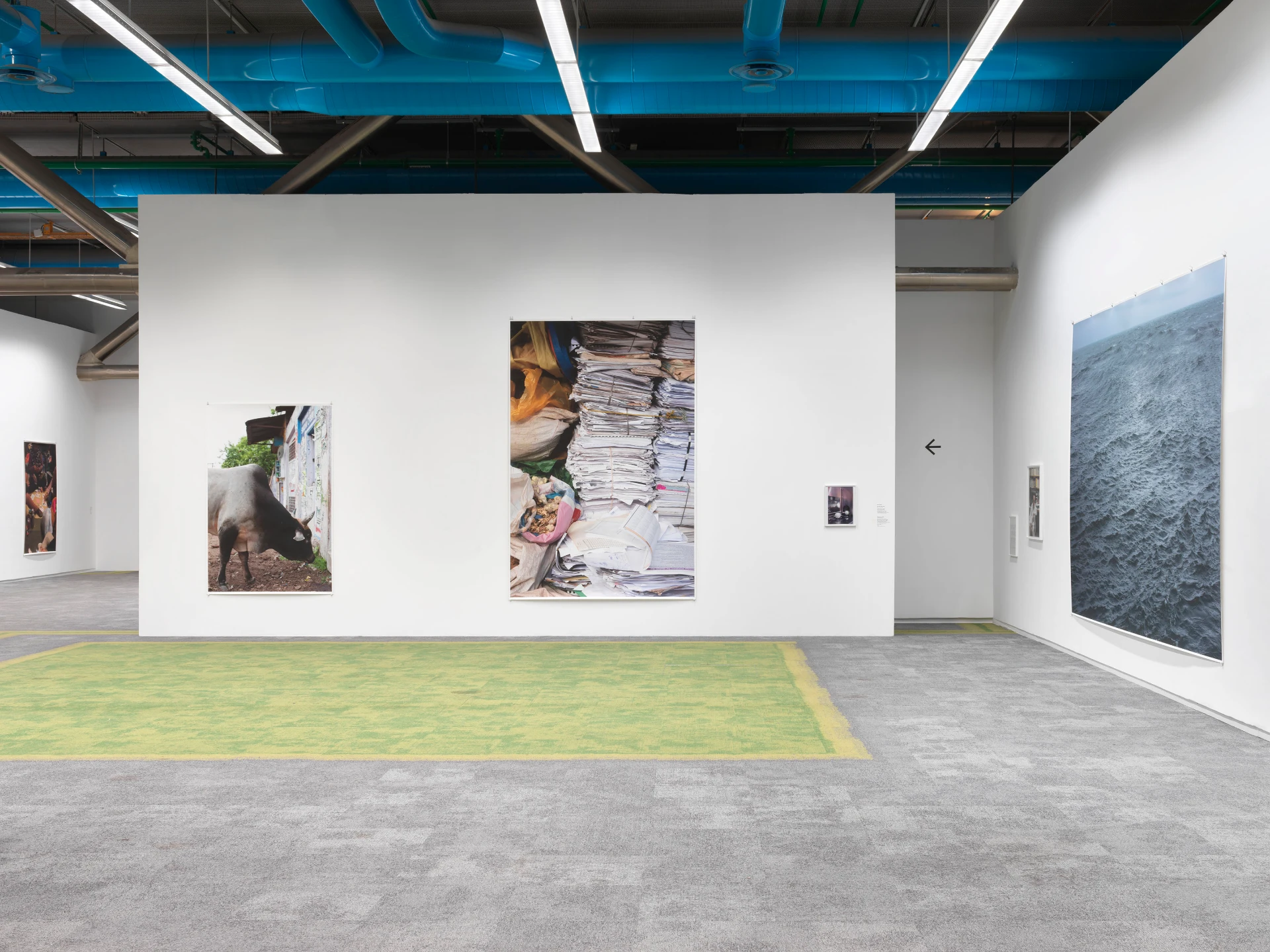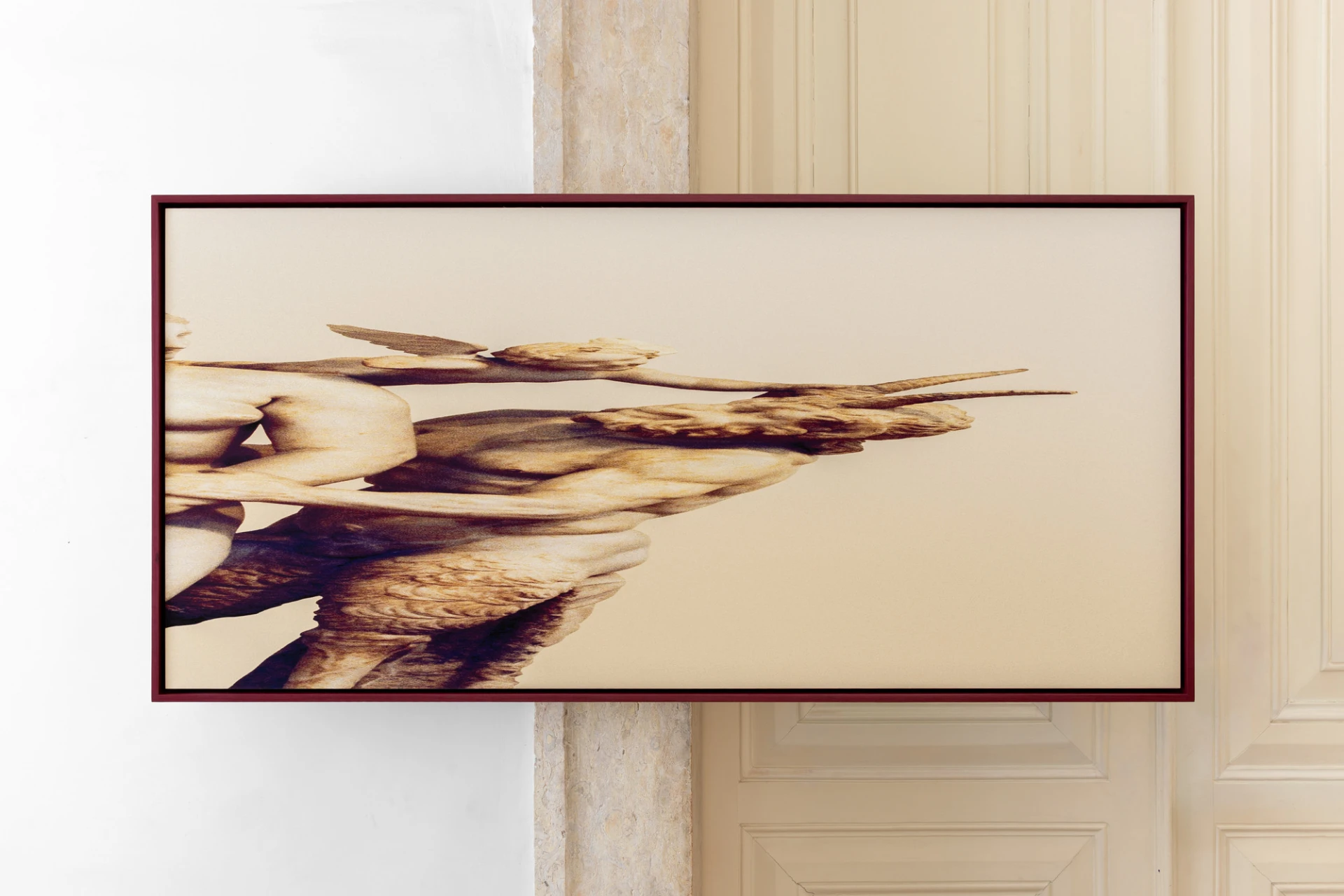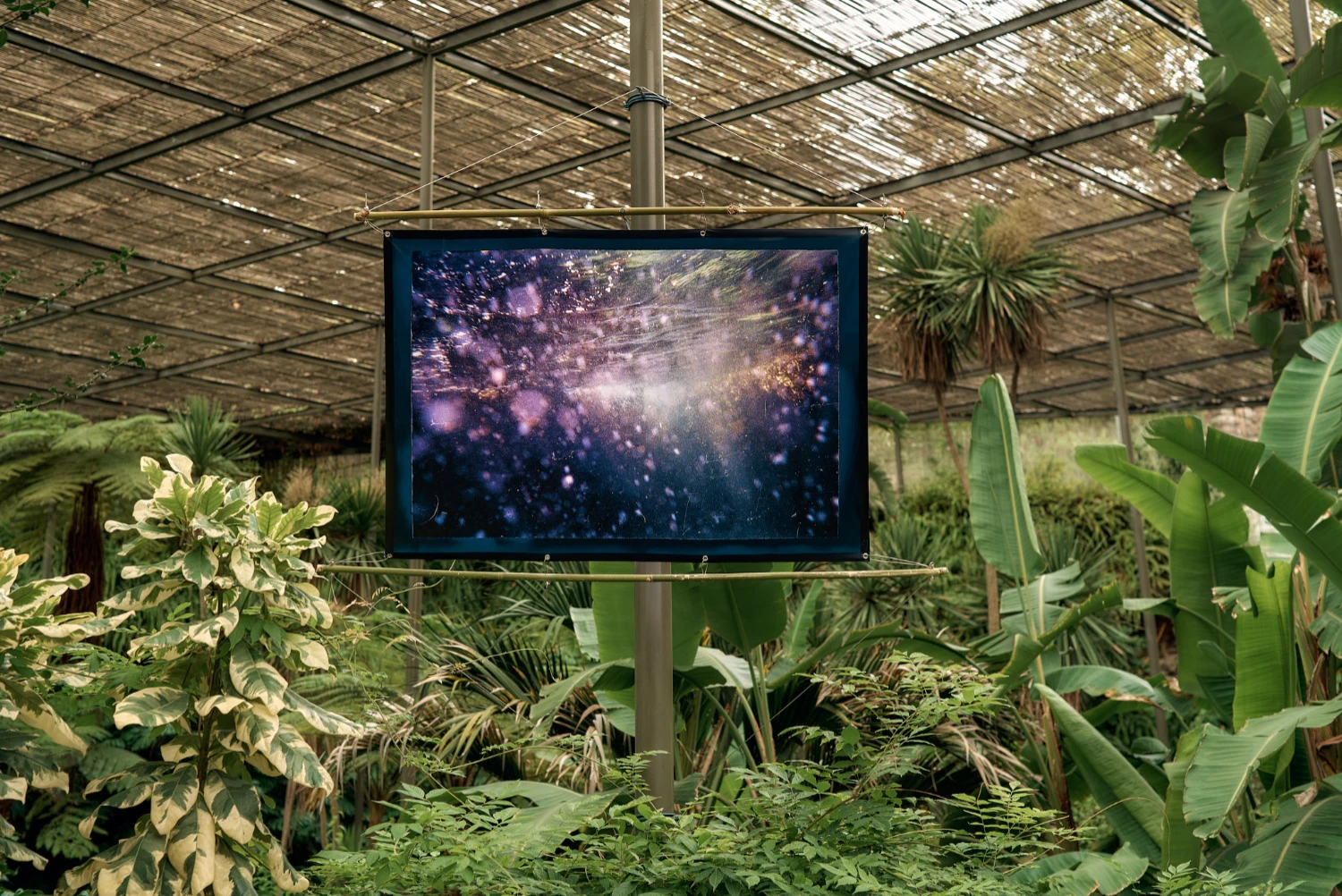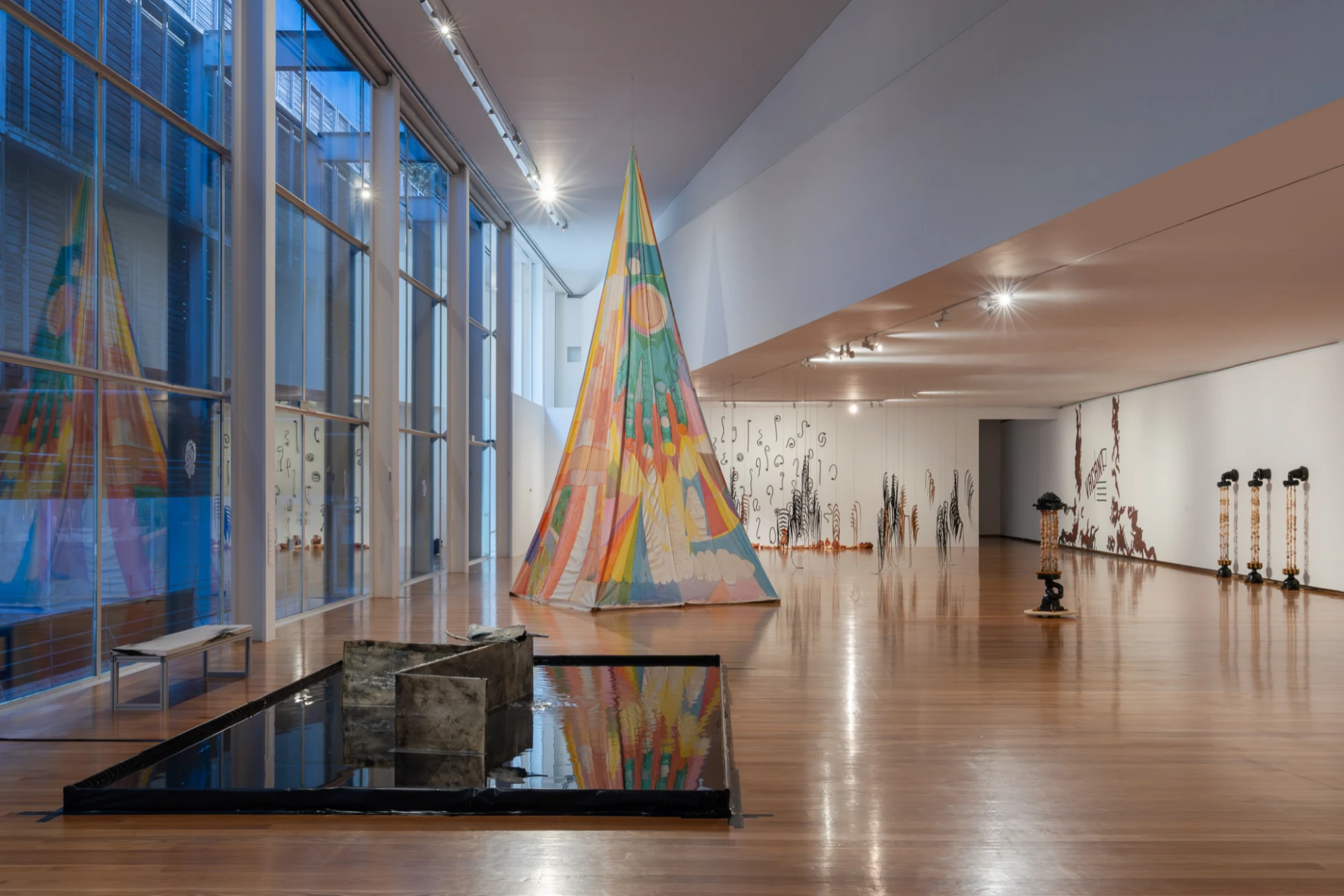article
Notes on Lucid Reverie – Panorama of Portuguese Contemporary Art
"Lucid Reverie": there was something about the name itself that immediately drew me in. It felt like a tangible form of dreaminess, the bodily echo of imagination, a conscious state behind the dazed, love-like drift of reverie. A brilliant name. The subtitle, "A panorama of Portuguese contemporary art", added another layer. The word “panorama” reminded my most cherished moments since moving to Portugal: the act of stepping away from the gaze, so that imagination might also become part of it.
One of the most rewarding aspects of visiting a contemporary art exhibition in Portugal is experiencing how the gallery’s architecture and surrounding landscape enrich the overall experience.
Galeria Municipal do Porto is located within the 19th-century Palácio de Cristal gardens, inspired by London’s Crystal Palace, which hosted the Great Exhibition of 1851. Upon entering through Emílio David Garden, visitors are greeted by the ornate fonte d’art Venus Fountain by J.J. Ducel, featuring leaves, spirals, mythological creatures, and sea life. These iron sculptures scattered across the gardens reflect Porto’s progressive spirit in the 19th century and the rise of iron as both an architectural and artistic medium.
Lucid Reverie, inaugurated on July 12th, was curated by Hiuwai Chu, Exhibitions Director at MACBA in Barcelona, and Raphael Fonseca, Curator of Modern and Contemporary Latin American Art at the Denver Art Museum. Invited by João Laia, Artistic Director of Porto’s Contemporary Art Department, the curators developed an exhibition deeply engaged with the Portuguese art scene. It presents artists with strong and consistent practices who have yet to receive widespread international recognition, mirroring Porto’s growing identity as a vibrant city of art.
Lucid Reverie: there was something about the name itself that immediately drew me in. It felt like a tangible form of dreaminess, the bodily echo of imagination, a conscious state behind the dazed, love-like drift of reverie. A brilliant name. The subtitle, A panorama of Portuguese contemporary art, added another layer. The word “panorama” reminded my most cherished moments since moving to Portugal: the act of stepping away from the gaze, so that imagination might also become part of it.
Within the exhibition space, a chiaroscuro effect - the dramatic interplay of light and shadow - naturally fills the room. This is made possible by architect José Manuel Soares’s façade design, whose use of long, slatted panels invite natural light into the gallery in striking, ever-shifting ways. As a result, each artist’s “field of research” seems to dissolve, unravelling into a more fluid, open terrain. By this point, the economic and mechanical world outside has been left behind. Instead, we encounter free-floating elements of history, nature, and sexuality.
At the heart of the exhibition stands Climacz, an installation by João Pedro Vale + Nuno Alexandre Ferreira, offering a brief yet intense encounter with our isolated desires. No light filters through its entrance or exit, only music and rhythm remain, suggesting that at times, darkness reveals more than light.
Ana Vidigal’s large, multi-layered work brings a ship - like one from a Greek tragedy - into a sea of fantastical children’s drawings embedded within the composition. The sound of water in Sena Gonçalo’s installation blends with Sofia Borges’ film The Soul of Water, where a man in a red bandana smiles on a bed, despite the heavy burdens in his soul. The porous surfaces in Francisco Trêpa’s work, always hinting at something wild and unsettling beneath beauty, resonate with the pleasure of being both hidden and visible in João Gabriel’s paintings. Mané Pacheco’s works, marked by the tension of bodily presence, seem to echo the spirit of the Venus fountain in the garden just outside, where mythology, desire, and ornament converge. In contrast, Tiago Mestre’s softened, time-worn forms and Sara Bichão’s taut, near-bursting sculptural rhythm create a quiet dialogue: between strain and release, collapse and containment.
The silent dialogue carries through both floors of the exhibition, felt in the atmosphere as much as in the works themselves.
This question truly interests me and guides Raphael Fonseca and Hiuwai Chu’s curatorial approach: This exhibition brings together artists who do not avoid the idea of the document and the appeal of the “real” from a sociological perspective.
I recall that: In one of his novels, philologist and writer Jaume Cabré suggests that people do not reside in countries, but in language. This idea implies that staying in or leaving a place might not be what truly matters. Whether an artist chooses to remain in their homeland as a form of resistance or travels thousands of miles away from it, the one thing they cannot escape is themselves, and the place they ultimately inhabit, as Cabré puts it, is language.
This shared language grows organically, beyond structure. Lucid Reverie undoubtedly speaks this language. Its panorama embraces a style that does not shy away from the allure of reality or from questioning the past. As Michel Foucault often reminded us, we must return to things, revisiting, reconsidering, rethinking. In an age overwhelmed by information, contemporary art’s ability to present complex issues from unexpected angles without offering immediate solutions is invaluable. It invites viewers to pause, reflect, and rediscover.
The artists in Lucid Reverie do more than share their works or processes; they interrogate the past and question moral frameworks, exploring resistance and refusal. Portugal is a wonderful place to witness the journey of contemporary art, where history is ever-present and where artistic gestures arise not only from tradition but also from rupture, reinvention, and quiet forms of resistance.
Lucid Reverie is on view until October 12, 2025.
Participating artists: Ana Vidigal, André Sousa, Andreia Santana, Belén Uriel, Dayana Lucas, Francisco Trêpa, Gonçalo Sena, Ilídio Candja, Joana Escoval, João Gabriel, João Pedro Vale + Nuno Alexandre Ferreira, Mané Pacheco, Mariana Caló & Francisco Queimadela, Sara Bichão, Sara Chang Yan, Silvestre Pestana, Sofia Borges, Teresa Murta, Tiago Madaleno, Tiago Mestre.
BIOGRAPHY
Ayşenur Tanrıverdi is an Istanbul-based writer, living in Lisbon since September 2022. She studied at Istanbul University and is the author of two published works of literary fiction. A regular contributor to Cumhuriyet, a major Turkish newspaper, where she focuses on Portuguese culture. Her essays and critical texts on theatre, literature, and contemporary art have also been featured in various art magazines.
UMBIGOLAB LINKS
ADVERTISING
Previous
article
 [C] CGD, [L] MUSA_cred_Antonio_Jorge_Silva-256bq.jpg)
06 Aug 2025
PARTIDA…, curated by Hugo Dinis at MU.SA - Museu das Artes de Sintra
By Tomás Saraiva
Next
article

11 Aug 2025
Exercises in Public Intimacy: Wolfgang Tillmans at the Centre Pompidou
By Alexander Burenkov
Related Posts



